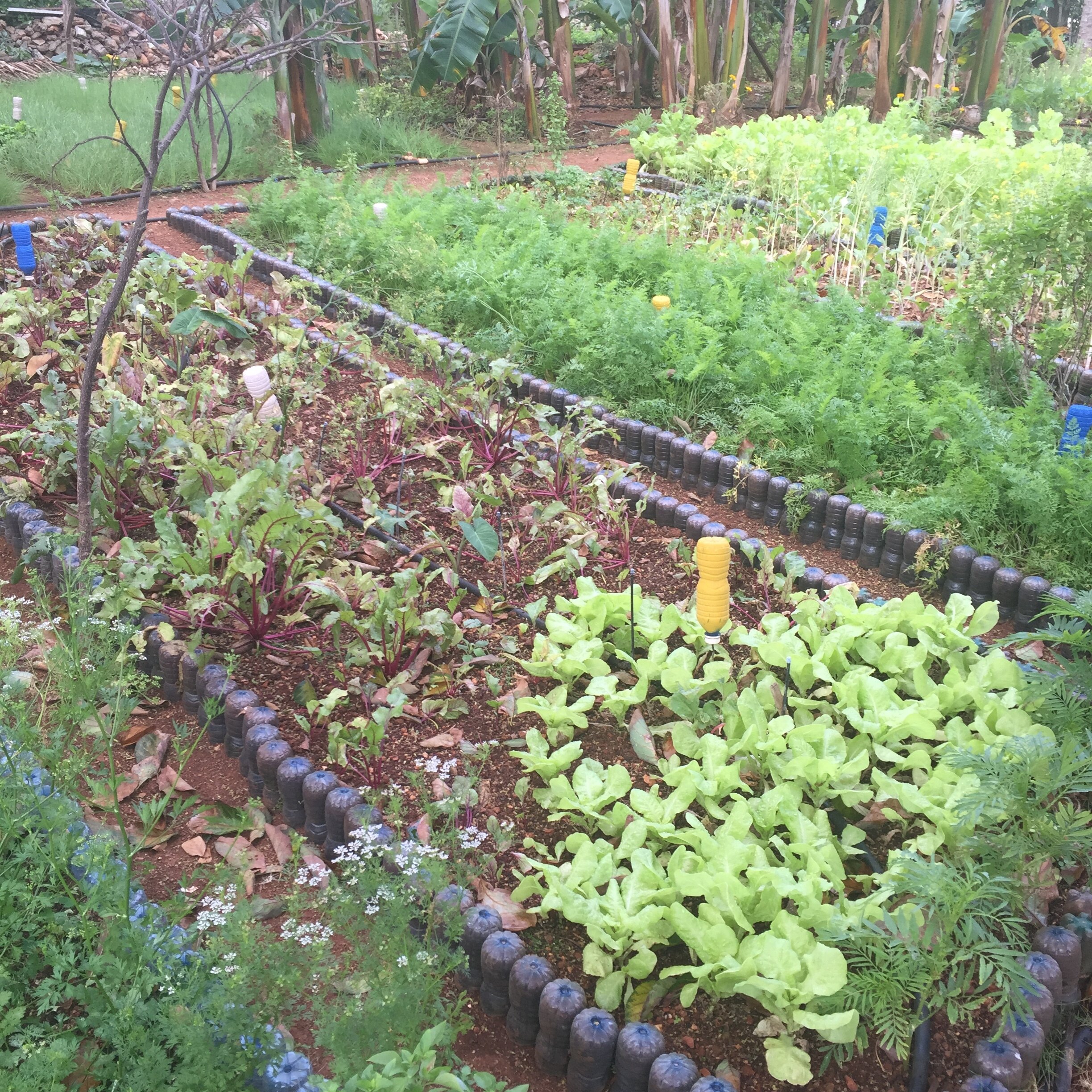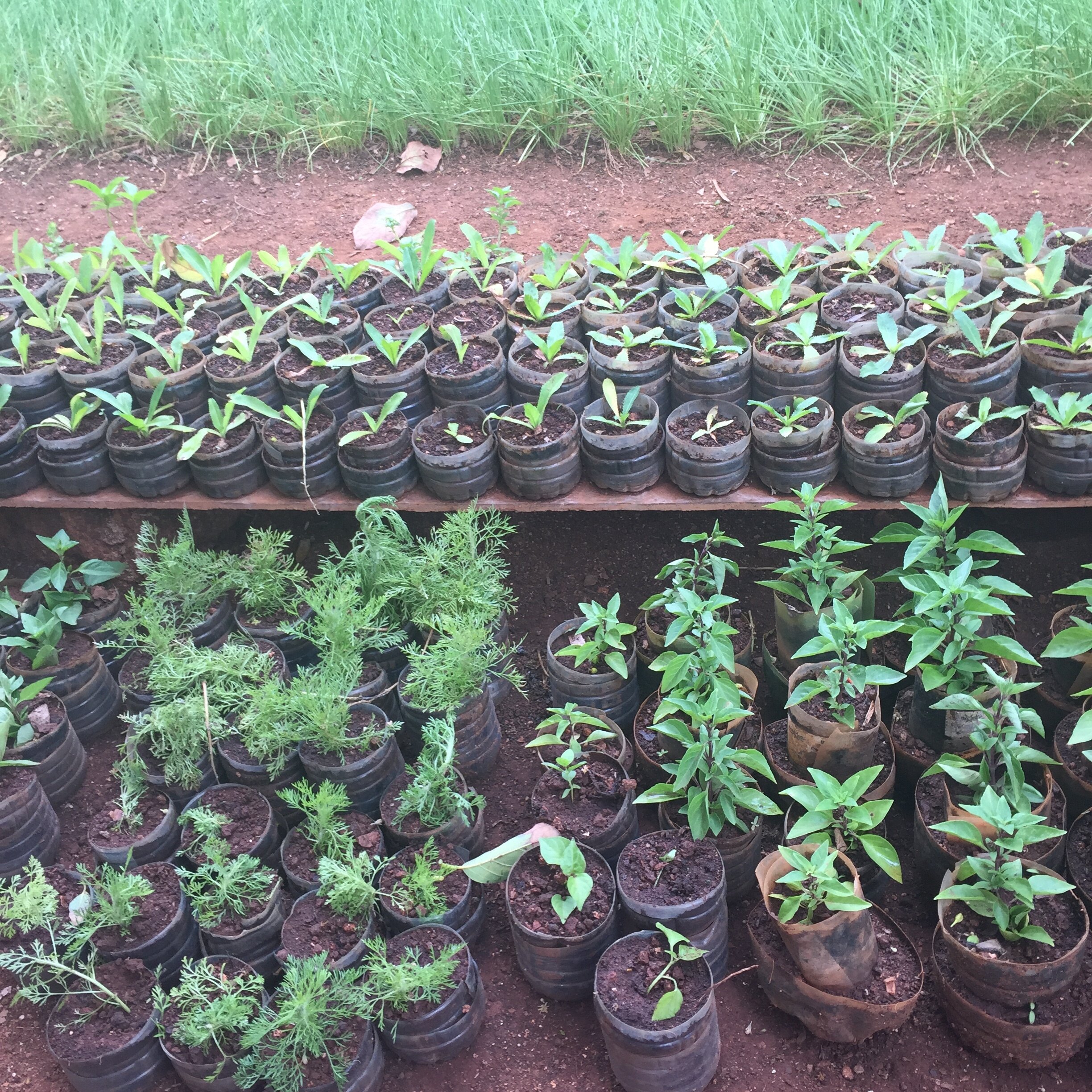That Time I Staged (for a day) in Cojimar, at Ajiaco Café
The first time I cooked in a restaurant kitchen was in 2017 on a family vacation to Cuba (yes, Cuba). On our second day in Havana, our guide took us to an organic farm and restaurant concept called Café Ajiaco. It was located in Cojimar, a small fishing town about 20 minutes outside the capital city’s center.
What is Café Ajiaco? Good question. Let’s start with this: Ajiaco is a complex stew of different legumes and pieces of meat. The ingredients cook in boiling water until the pot’s contents turn thick, glossy, and succulent. It is seasoned with a variety of herbs, spices, alliums, and Cuba’s national treasure: the Ajiaco pepper, hence the name. Ajiaco will vary from home to home, because the recipe’s only requirement is to use whatever ingredients are available. The Cubans are not strangers to scarcity: when beef became a rare commodity (cows are property of the state in Cuba) they used pork instead. When access to oils and animal fat decreased, the people learned to utilize different condiments and cooking styles to replicate certain textures and flavors.
With this attitude of adaptability, it makes sense for a place like Café Ajiaco to be named as such. Since 2011, the restaurant has been a hub for culinary experimentation while representing Cuba’s gastronomic history. Like the stew, Café Ajiaco built itself from a foundation of Cuba’s culinary heritage, but innovates and adapts according to its country’s politics, people, and environment. They serve bright and citric ceviche akin to the flavors of Peru. The roots of an escovitch swordfish with onions and peppers can be traced back to islands of the Caribbean. Beef Tenderloin in a rum and coffee cream sauce is a delicacy influenced by French cooking technique and the people’s love for their local (and powerful) liquor.
Before lunch, we were taken up a narrow street behind a small circle of houses. In the backyard of one of these homes is the Café’s organic farm. It’s not even ½ an acre, but the plot was an explosion of nature and nurture. I recall the scents from an array of herbs filling my nostrils; the savory and peppery taste of raw garlic chives on my tongue; and the texture of the crinkly, earthy salad greens resting contently in my hands. I was hooked.
We returned to Café Ajiaco and were seated at an outdoor picnic table. After a spectacular feast of grilled and slow-cooked meats, rice and beans, and sofrito-laced seafood, our guide returned to take us to our next destination. While my family members—stomachs full and slightly drunk on Havana Club (the rum I mentioned earlier)—walked through the kitchen and out to the car, I could not (or maybe just didn’t want to?) escape the restaurant’s allure. Earthy aromas of black beans being simmered with tomatoes, onions, bay leaves, and oregano left a seductive scent trail I had to follow. I was hypnotized by the rhythmic toss of a skillet containing sumptuous, plump pink prawns and chopped garlic. A spark of excitement flickered within me as the cook added a splash of white wine, momentarily setting the pan ablaze for that final flavor infusion. A strange impulse or powerful inclination expelled the request from my mouth: “Could I stay and cook?”
The kitchen was a small space surrounded by two dining rooms. I think the indoor space could hold up to 50. Outside, a string of picnic tables could handle about 20-30 more. It was around 1pm—almost siesta, but still time for a late afternoon rush. I was 23, the youngest person and only female in the kitchen. First, a lay of the land and a test of my knife skills. In a counterclockwise fashion I was introduced to the first stove: four burners for rice, beans, and seafood. Then, a tiny window for dirty dishes to be pushed through. The next range, a six-top with an oven, was utilized for braising and roasting meats. A small four-foot island in the center of the space was both for prep and plating. It was chaotic, hot, and awesome.
A cook handed me a chef’s knife and a large yellow onion. In Spanish, he asked me to dice. I did so, and his look of surprise and approval was reassuring.
¡Cocinemos!
A small piece of a giant feast from Cafe Ajiaco
Suddenly the back of house erupted with music and laughter. We took shots of Havana Club out of bottle caps while empty plates were shoved in my face, demanding to be filled with sustenance. I poured some wine over clams and let the flames dance to the blaring salsa beat; I sliced steaks against the grain and spooned it’s jus delicately on top; I prepared endless amounts of sofrito—a foundational mixture of bell pepper, onions, and garlic, with an addition of their farm’s tomatoes and fragrant herbs like oregano and cilantro.
“Mami, ven aquí,” I heard from my right side. A cook was holding a spoon of sofrito to my mouth, making his intentions clear. I took the utensil from his hand and closed my lips around the end of the hot wooden spoon. I theorized in Spanish that it needed more salt. He smiled brightly and nodded in agreement. I did the honors: I pinched a healthy amount of crystalized salt water from the bin, and sent a flurry into the skillet. We tasted again and, when satisfied, took another bottle cap shot to reward our efforts.
Time went by in an instant. When my family came to collect me at the end of the day, I was sweat-stained, bleary-eyed, and a tad too drunk. Yes, I handled the heat, but it was time to get out of the kitchen. As a final farewell, the cooks gathered with glasses and filled them with—of course—more rum. We suspended our glasses in the air, thanking each other for our efforts and great day of service. The kitchen brigade system is exactly what you’ve read and imagined. It’s handsy, hot, overwhelming, alcohol-infused, and impossibly fast. But when you and six others endure that kind of suffering together, the discomfort dissipates underneath unrelenting waves of adrenaline and concentration. I was addicted to the fluctuating dopamine highs of non stop preparing, plating, and serving food whose origins could be found just outside Café Ajiaco’s door. I acknowledge that my perception is slightly skewed, nauseatingly romantic, even. As a foreigner and an amateur cook, I am an outsider in more ways than one. It was only a handful of hours, but those cooks became my friends.
I learned a lot of things from my day at Café Ajiaco. For the first time I understood that in a restaurant kitchen, all five senses are required to go into overdrive. That heightened awareness becomes the system’s most vital ingredient. The human’s ability to push the limits of their sensory threshold open new doors to creativity, connection, and expression. Although I can speak Spanish, it was ultimately unnecessary. We settled into a style of communication that can only be achieved in a restaurant kitchen—from a reliance on words to a dependence on rhythm and synchrony that destroys barriers of race, gender, and language. This is the other side of the brigade system, one that welcomes spontaneity, trust, and a little insanity. Food and service therefore acts as the equalizer. At Café Ajiaco, diners might not see what’s happening behind that kitchen door. But the meal itself—its history, location, and preparation—invites restaurant patrons to feel what we felt, and understand the importance of Cuba’s heritage, the vibrancy of its people, and their diverse food traditions.




